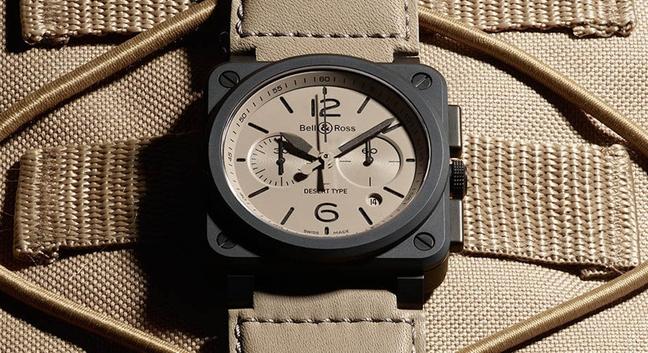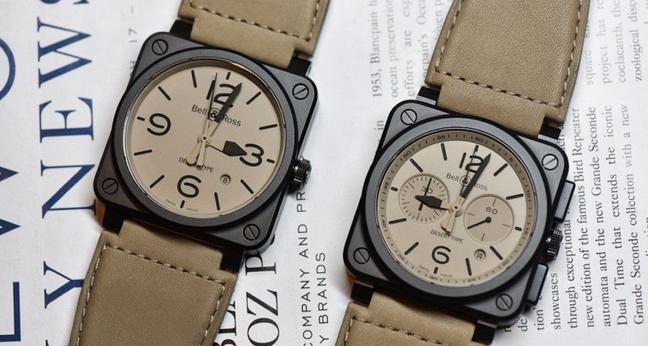When it comes to the tweezer-wielding mountainfolk of Switzerland’s Jura, heritage can be both a blessing and a curse. A blessing when it comes to proving a brand’s pedigree, “savoir-faire” and informing a design language; but a curse when the historical baggage stifles fresh thinking.
The latter explains why, in the highly historical world of watchmaking, a certain way of doing things will always be precisely that; the certain way. Take pilot’s watches for example. Sure, you’ll always need a crisp, clear dial, with an easy-to-fiddle-in-gloves crown, but why should it always be round, or indeed black-faced? It’s because the brands who have always made necessarily reliable pilot watches are the brands who owe it to their loyal fanbase to make it in the original-and-authentic way. Just look at the hoo-hah over IWC’s controversially khaki Top Gun chronograph.

No, to mix things up you need a new kid on the block, unfettered by a past. And one such brand is Bell & Ross, who really have reinvented the pilot watch with Alpine-fresh eyes.
Made the proper Swiss way in La Chaux-de-Fonds, this rather un-Parisian of Parisian brands (despite being 100% owned by Chanel since 2001) was founded in the early Nineties by Bruno Belamich and Carlos Rosillo (the titular Bel’ and Ros’) in collaboration with über-German watch brand Sinn, and some aircraft instrument manufacturers. Their mission: to craft robust and functional watches for “professionals”, but with an all-important, unabashedly modern approach.
It wasn’t just pilots who took to the brand immediately. Astronauts, elite police squads, divers, and bomb-disposal experts have all used Bell & Ross watches as tools of their trade. But it just so happened that the clean, functional styling went rather nattily with a charcoal-grey knit or a retro tee, meaning Bell & Ross quickly found themselves equally beloved of hipsters and roll-necked architects.

They’ve responded well to this unintended cool factor, with deliberately retro and fashionably chunky specimens supplementing the more-sober Vintage collections every year, such as a gnarly Bomber Command-inspired regulator, a pocket watch, tourbillons even… not to mention the restless iterations of the brand’s most iconic model yet: the massive and brutally square BR 01 – arguably Bell & Ross’s golden ticket to the fashion set. And instead of being dictated-to by the “certain way” of doing a military watch, it has worked the other way: myriad new ways have been discovered through sheer creativity for the sake of creativity.
This year, a new trio of so-called “Desert Type” models proves the point. Still elegantly functional for jobbing aviators and Saharan infantrymen, the sandy colour scheme paired with sleek matt-black ceramic and beige (their word, not ours) calfskin feels at once militant yet dapper. In the slightly smaller “BR 03” guise – the 42mm 03 being slightly more, shall we say, “wearable” than the 46mm 01 – we have the BR 03-92 automatic (£2,800) and BR 03-94 chronograph (£4,000) powered by robust ETA movements. Meanwhile, even daintier wrists benefit from the 39mm BRS – rather keenly pitched at £1,900, despite its quartz innards, though that might have something to do with the high-tech ceramic surrounding them.

The Desert fatigues aren’t new, nor is the ceramic, but the cocktail of the two is a heady one, and one you wouldn’t expect from anyone less youthful and exuberant than Bell & Ross.
Visit Bell & Ross here.

Become a Gentleman’s Journal Member?
Like the Gentleman’s Journal? Why not join the Clubhouse, a special kind of private club where members receive offers and experiences from hand-picked, premium brands. You will also receive invites to exclusive events, the quarterly print magazine delivered directly to your door and your own membership card.


